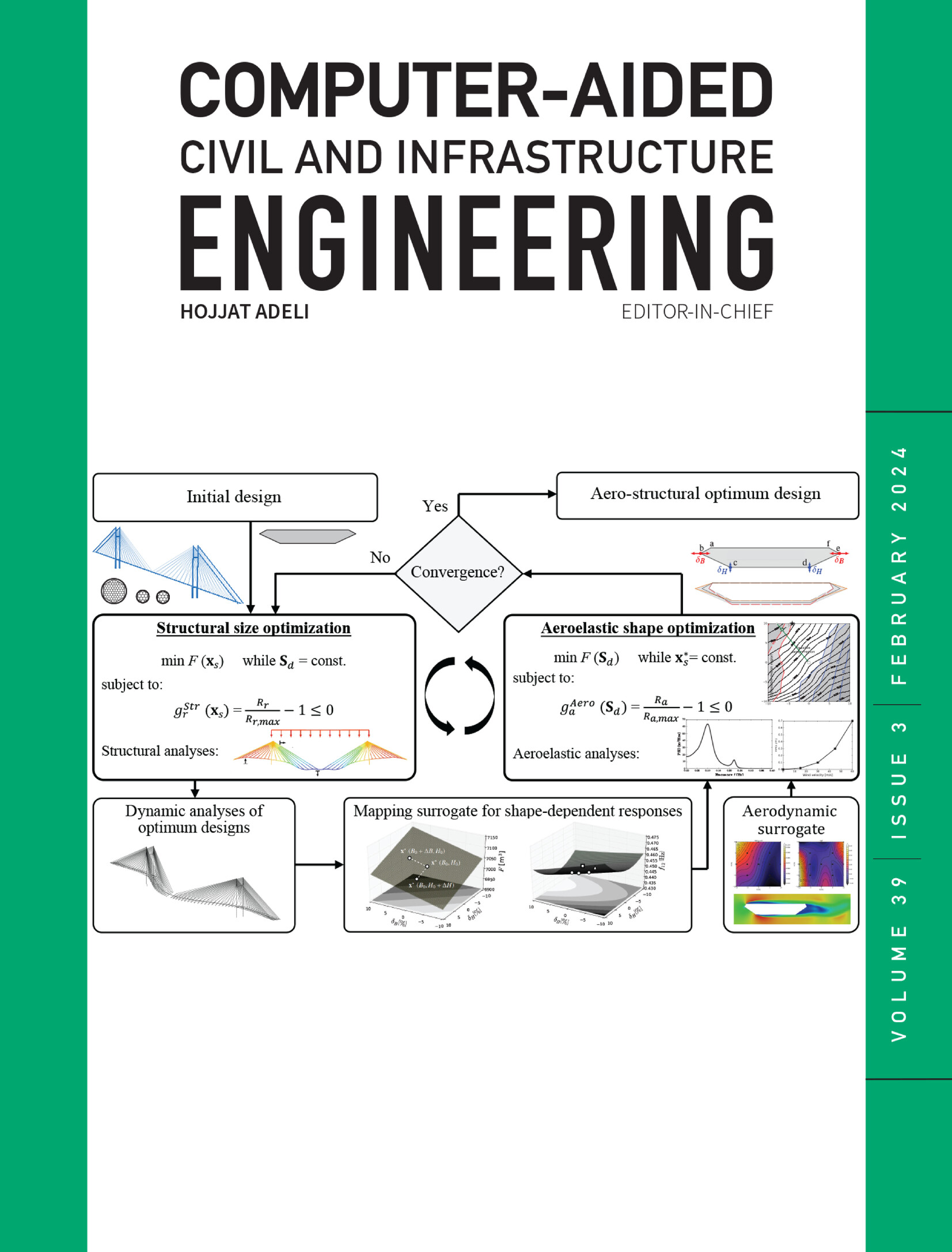Autonomous construction framework for crane control with enhanced soft actor–critic algorithm and real-time progress monitoring
IF 8.5
1区 工程技术
Q1 COMPUTER SCIENCE, INTERDISCIPLINARY APPLICATIONS
引用次数: 0
Abstract
With the shortage of skilled labors, there is an increasing demand for automation in the construction industry. This study presents an autonomous construction framework for crane control with enhanced soft actor–critic (SAC-E) algorithm and real-time progress monitoring. SAC-E is a novel reinforcement learning algorithm with superior learning speed and training stability for lifting path planning. In addition, robotic kinematics and a control algorithm are implemented to ensure that the crane can autonomously execute the lifting path. Last, novel hardware communication interfaces between robot operating system and building information modeling (BIM) are developed for real-time construction progress monitoring. The performance of the proposed framework was demonstrated using a robotized mobile crane to stack concrete retaining blocks. The results show that the proposed framework can be effectively used to execute the retaining block construction using the robotized mobile crane with real-time construction update in the BIM platform.基于增强软角色评价算法和实时进度监控的起重机自主施工框架控制
随着熟练劳动力的短缺,建筑行业对自动化的需求越来越大。本研究提出了一种具有增强软行为者评价(SAC-E)算法和实时进度监控的起重机自主施工控制框架。SAC-E算法是一种新的用于提升路径规划的强化学习算法,具有较好的学习速度和训练稳定性。此外,实现了机器人运动学和控制算法,以确保起重机能够自主执行提升路径。最后,开发了机器人操作系统与建筑信息模型(BIM)之间的硬件通信接口,实现了对施工进度的实时监控。使用机器人移动起重机来堆叠混凝土挡土块,演示了所提出框架的性能。结果表明,所提出的框架可以有效地用于在BIM平台上使用机器人移动起重机进行挡土块施工,并进行实时施工更新。
本文章由计算机程序翻译,如有差异,请以英文原文为准。
求助全文
约1分钟内获得全文
求助全文
来源期刊
CiteScore
17.60
自引率
19.80%
发文量
146
审稿时长
1 months
期刊介绍:
Computer-Aided Civil and Infrastructure Engineering stands as a scholarly, peer-reviewed archival journal, serving as a vital link between advancements in computer technology and civil and infrastructure engineering. The journal serves as a distinctive platform for the publication of original articles, spotlighting novel computational techniques and inventive applications of computers. Specifically, it concentrates on recent progress in computer and information technologies, fostering the development and application of emerging computing paradigms.
Encompassing a broad scope, the journal addresses bridge, construction, environmental, highway, geotechnical, structural, transportation, and water resources engineering. It extends its reach to the management of infrastructure systems, covering domains such as highways, bridges, pavements, airports, and utilities. The journal delves into areas like artificial intelligence, cognitive modeling, concurrent engineering, database management, distributed computing, evolutionary computing, fuzzy logic, genetic algorithms, geometric modeling, internet-based technologies, knowledge discovery and engineering, machine learning, mobile computing, multimedia technologies, networking, neural network computing, optimization and search, parallel processing, robotics, smart structures, software engineering, virtual reality, and visualization techniques.

 求助内容:
求助内容: 应助结果提醒方式:
应助结果提醒方式:


